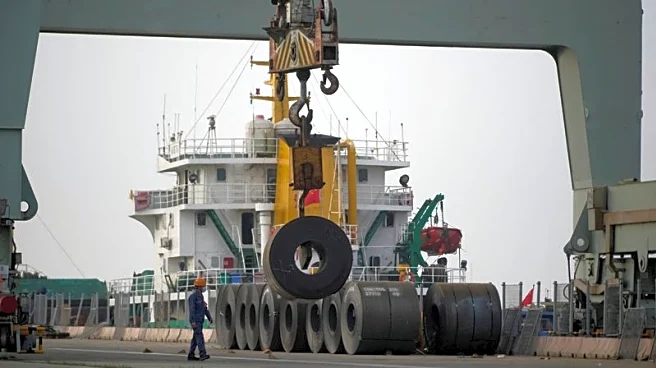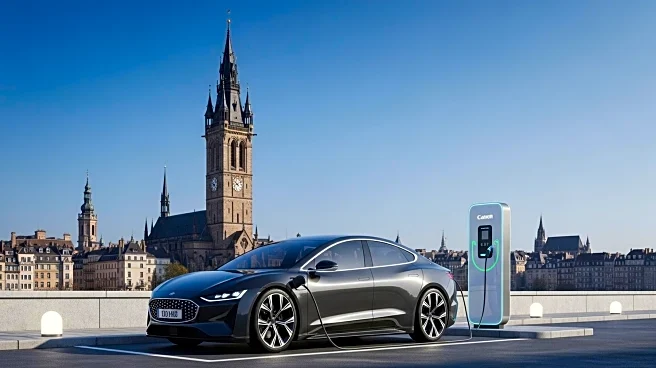What's Happening?
Chinese companies have significantly increased their overseas investments in green technology manufacturing, according to a report by the Net Zero Industrial Policy Lab at Johns Hopkins University. Since 2022, these companies have committed over $210 billion to projects across 53 countries, focusing on batteries, electric vehicles, charging infrastructure, green hydrogen, solar panels, and wind turbines. Southeast Asia remains the largest recipient, but the Middle East and North Africa have captured over 20% of new deals in 2024. Despite these investments, geopolitical tensions and trade restrictions pose challenges to the expansion.
Why It's Important?
China's aggressive investment in green technology manufacturing highlights its strategic focus on becoming a global leader in renewable energy. This expansion supports the integration of emerging markets into global supply chains, potentially boosting economic growth in these regions. However, geopolitical tensions, such as tariffs and sanctions, could hinder progress, affecting global trade dynamics and the pace of green technology adoption.
What's Next?
The report indicates a potential slowdown in investments due to geopolitical headwinds. Companies may adopt 'light-asset' strategies to maintain market access, allowing local firms to use Chinese manufacturing equipment. This shift could influence global supply chain structures and prompt other countries to enhance their green tech capabilities through subsidies and standards.
Beyond the Headlines
The expansion of China's green tech manufacturing raises questions about overcapacity risks and the sustainability of such rapid growth. As international competition intensifies, countries may need to balance economic interests with environmental goals, potentially reshaping global energy policies.











